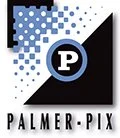Archival Monochrome and Color Art Prints
Monochrome Piezography Carbon Pigment Inks
Since 2002, I have dedicated my printmaking practice to Piezography Carbon Pigment inks, a methodology that exemplifies the highest standards in black-and-white printmaking. Developed and refined by Jon Cone of Cone Editions Press, Piezography is universally recognized as the most archival and tonally accurate monochrome printing system currently in use.
My fine art prints are produced utilizing a converted Epson Inkjet printer, specifically customized to operate exclusively with Piezography carbon pigment monochrome inks. Unlike conventional inkjet systems that use dye or composite pigments, this process employs multiple shades of pure carbon, resulting in exceptional tonal depth and seamless gradations. The resulting image in black and white combines the delicacy of fine silver gelatin prints with the permanence and richness of pure carbon.
Equally essential is my choice of paper. I print exclusively on Canson papers, manufactured by one of the world’s oldest paper mills, which has been in continuous operation since the 1500s. I utilize Canson Edition Etching Rag, a beautifully textured, museum-quality paper that perfectly complements the depth and subtlety of Piezography carbon. The combination of Piezography inks and Canson papers produces prints characterized by exceptional durability — verified to remain stable for several centuries without fading. Achieving this standard of quality and longevity is uncommon, ensuring confidence that future generations will value your investment in my artwork.
Color Pigment Inks
Epson printers and archival pigment ink with longevity of Canson Platine Fibre Rag, a luxurious baryta-style paper that offers unmatched brilliance and tonal range. These papers are among the finest globally, and their proven archival stability ensures the longevity that the inks themselves require.
Before to Printing
Prior to printing, both monochrome and color printers undergo calibration through the process of printing targets, which are subsequently read using an x.rite i1 Pro 3 Plus Spectrophotometer. For monochrome printing, a Piezography-21x16-step target comprising 336 patches is measured within the Piezography Professional application. This data facilitates the creation of a linear curve that ensures all printed tones, from dark to light, are aligned in a uniformly spaced manner. An alternative method involves printing with ICC profiles; however, this approach has certain disadvantages, such as shadows becoming excessively dark, compressed, and unstable. It is noteworthy that ICC printing remains the standard practice within the industry.
For color printing, a x.rite i1 Photo Pro 3 Plus application produces six 11x17 target pages, comprising 2160 patches that are subsequently measured within the Photo Pro software to generate a custom ICC profile tailored to the specific paper and printer. Once again, paper manufacturers develop a universal profile for each type of paper, which continues to be the standard practice within the industry.
Print sizes range from 11x14 to larger. Framing uses conservation-grade materials.
Browse photographs in the China Gallery and California State Parks Gallery.
For quotes, editions, framing, or shipping, contact me. Learn more about John Palmer.

